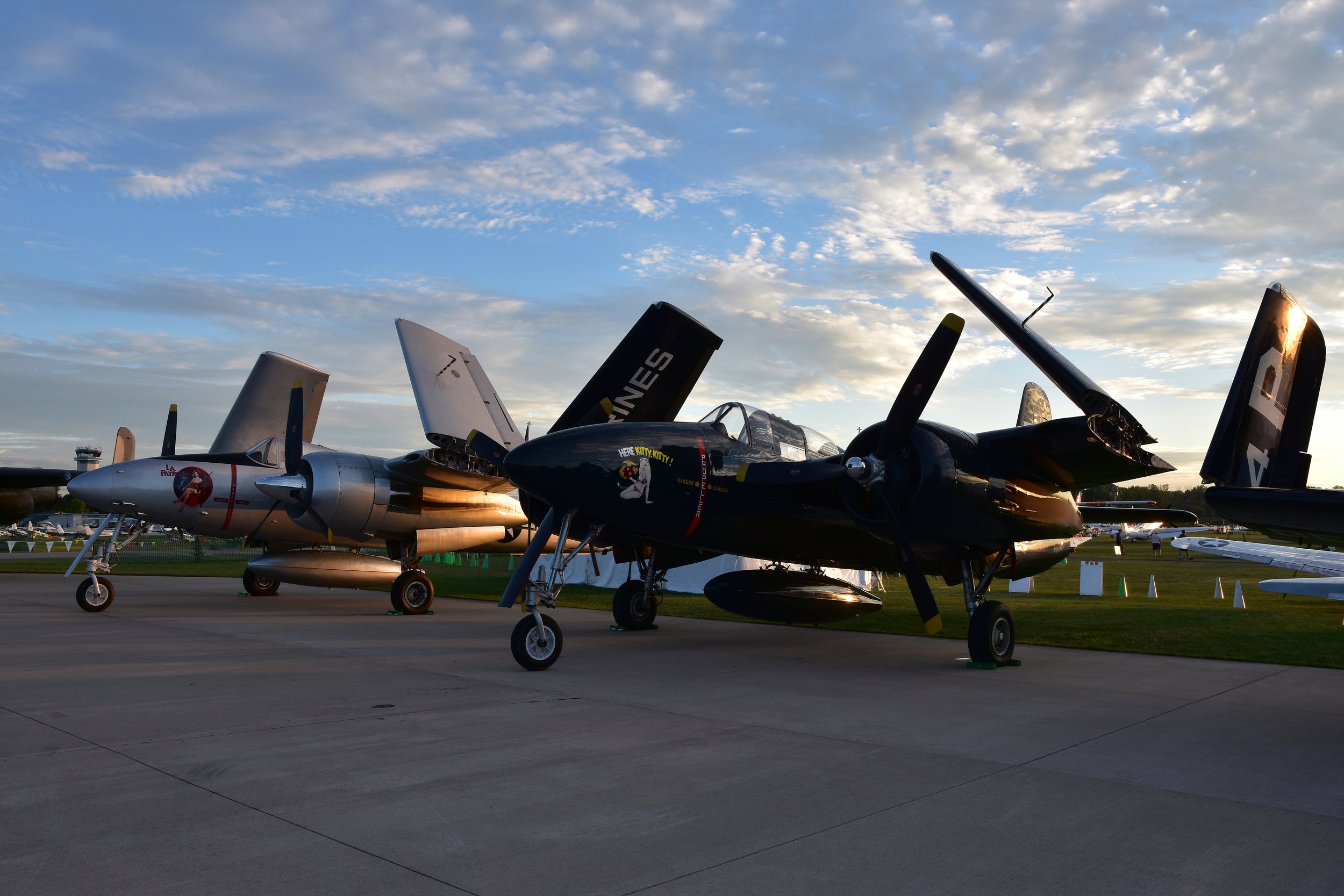
November 2 / Grumman F7F Tigercat first flight
First Flight 2 November 1943
Grumman F7F Tigercat
The Grumman F7F Tigercat was a heavy fighter aircraft that served with the United States Navy (USN) and United States Marine Corps (USMC) from the end of World War II until 1954. It was the first twin-engine fighter deployed by the USN. Although the Tigercat was delivered too late to participate in World War II combat, it was utilized in reconnaissance roles. During the Korean War, it primarily functioned as a night fighter and attack aircraft.
Initially designed for Midway-class aircraft carriers, early F7F production models were land-based because the aircraft was too large for older, smaller carriers. Only a late variant, the F7F-4N, was certified for carrier service.
The F7F’s development stemmed from the earlier Grumman XP-50 project, which was cancelled. Grumman advanced the design into the XP-65 (Model 51) for a future “convoy fighter” concept. However, in 1943, work on the XP-65 was halted in favour of what would become the F7F. The contract for the prototype XF7F-1 was signed on June 30, 1941. Grumman aimed to create a fighter that surpassed all existing fighter aircraft in performance and firepower, with auxiliary ground attack capabilities.
The F7F met performance expectations and was one of the fastest piston-engine fighters, boasting a top speed significantly greater than single-engine USN aircraft. Captain Fred Trapnell, a leading USN test pilot, praised the F7F as “the best damn fighter” he had flown. The aircraft was heavily armed with four 20 mm cannons and four .50 caliber machine guns, along with hardpoints for bombs and torpedoes. However, this speed and firepower came at the cost of heavy weight and a high landing speed. The aircraft failed carrier suitability trials due to poor directional stability with only one engine operational and tailhook design issues. Consequently, the initial production series was used only from land bases by the USMC as night fighters equipped with APS-6 radar.
Originally known as the Grumman Tomcat, the name was dropped due to its perceived sexual overtones. The first production variant was the single-seat F7F-1N; after the 34th unit, a second seat for a radar operator was added, creating the F7F-2N.
The F7F-3 was a second production version modified to address carrier acceptance issues. It was trialled on the USS Shangri-La, but a wing failure during a heavy landing led to its carrier qualification failure. The F7F-3 was produced in day fighter, night fighter, and photo-reconnaissance versions.
The final production version, the F7F-4N, was extensively rebuilt for additional strength and stability and passed carrier qualification, but only 12 units were built.
Although produced too late for its intended World War II role, early F7F-1 models served in the Pacific Theatre before the war ended. A Marine Corps photographic reconnaissance squadron, VMP-354, used the F7F in Guam and Okinawa in 1945 to photograph potential invasion sites for Operation Downfall.
During the Korean War, Marine Corps night fighter squadron VMF(N)-513 flew F7F-3N Tigercats in night interdiction and fighter missions, shooting down two Polikarpov Po-2 biplanes. This marked the aircraft’s only combat use.
Most F7F-2Ns were later modified to control drones for combat training, featuring bubble canopies over the rear cockpit for the drone controller. An F7F-2D used for pilot transitioning also had a rear sliding bubble canopy.
In 1945, two Tigercats were evaluated by the British Royal Navy but were rejected in favor of a naval version of the de Havilland Hornet.
F7F Tigercat Facts
First Twin-Engine Fighter: The F7F Tigercat was the first twin-engine fighter aircraft deployed by the United States Navy.
World War II Timing: Although it was developed during World War II, the Tigercat was delivered too late to see combat in the conflict.
Korean War Role: The Tigercat primarily served as a night fighter and attack aircraft during the Korean War.
Carrier Suitability Issues: Initially designed for Midway-class carriers, the Tigercat was too large for older carriers and faced issues with directional stability and tailhook design, limiting its carrier operations.
Exceptional Speed: The F7F was one of the fastest piston-engine fighters of its time, with a top speed significantly exceeding that of single-engine Navy aircraft.
Heavy Armament: It was heavily armed with four 20 mm cannons and four .50 caliber machine guns, along with bomb and torpedo hardpoints.
Name Change: Originally called the Grumman Tomcat, the name was changed due to its perceived sexual connotations.
Limited Carrier Service: Only the F7F-4N variant was certified for carrier service, with just 12 units built.
Reconnaissance Missions: During World War II, the F7F was used for reconnaissance missions in the Pacific, including photographing potential invasion sites for Operation Downfall.
Combat Success: In the Korean War, Marine Corps squadron VMF(N)-513 used the F7F-3N to successfully engage enemy aircraft, marking its only combat use.














